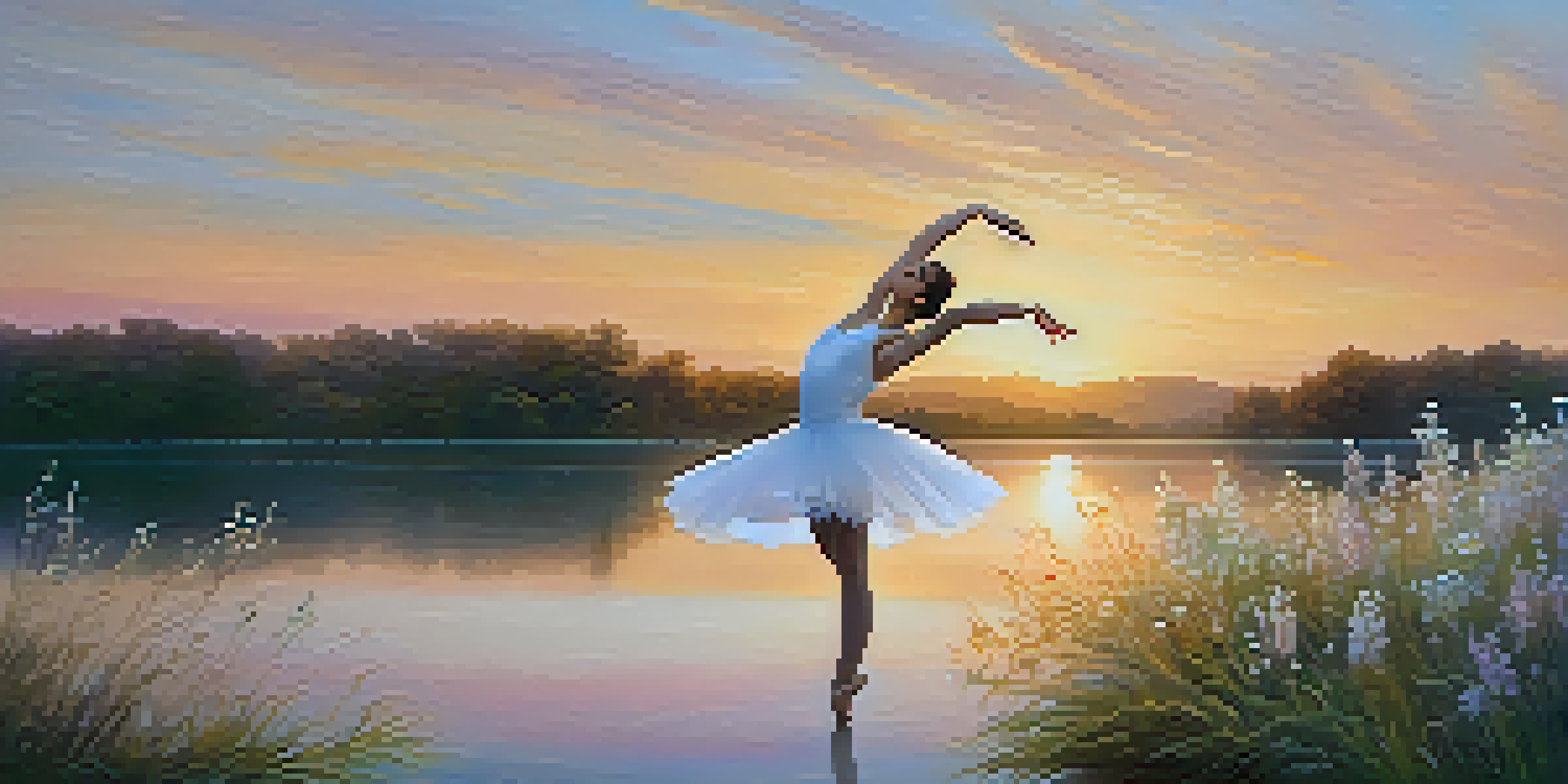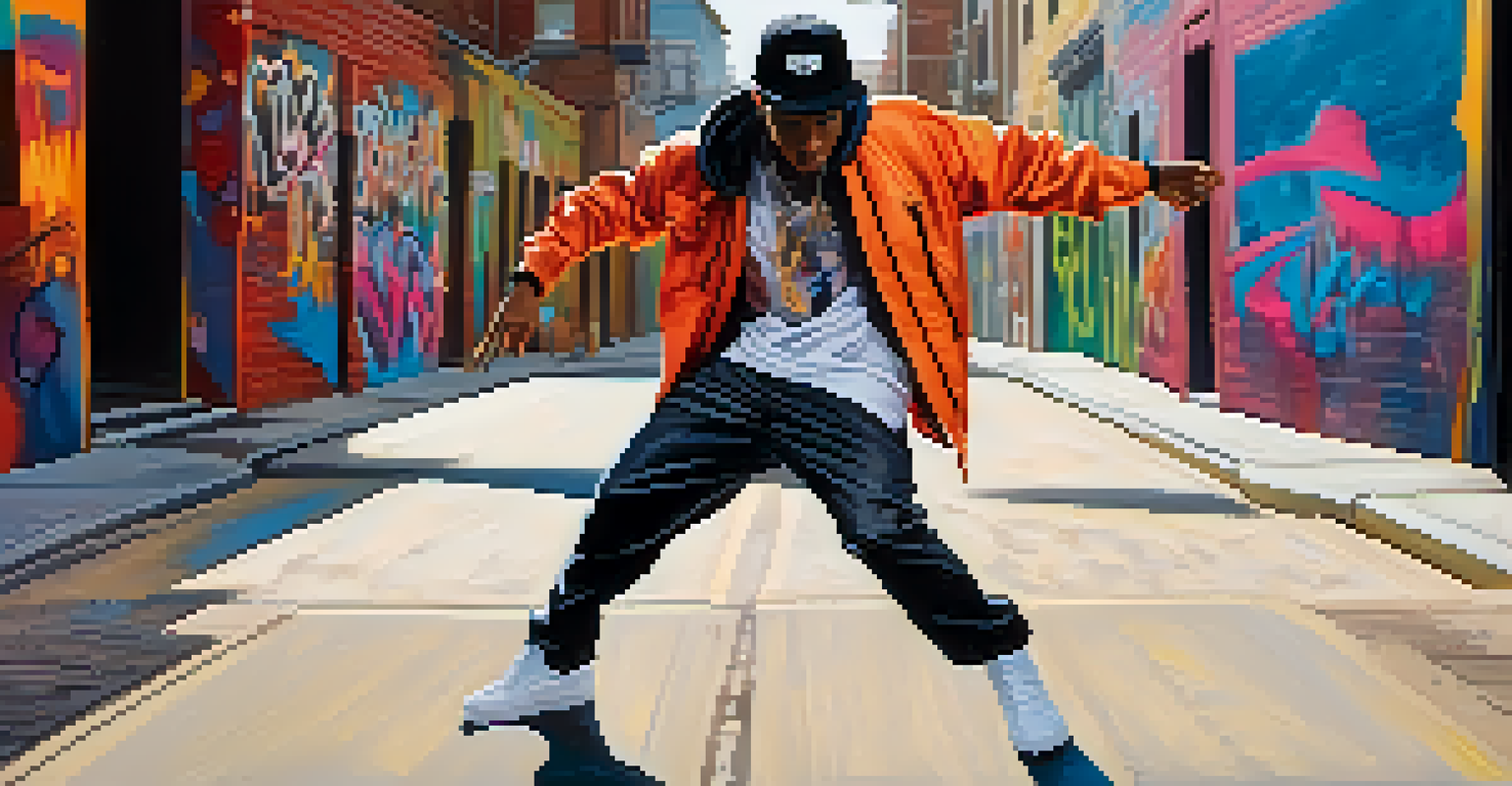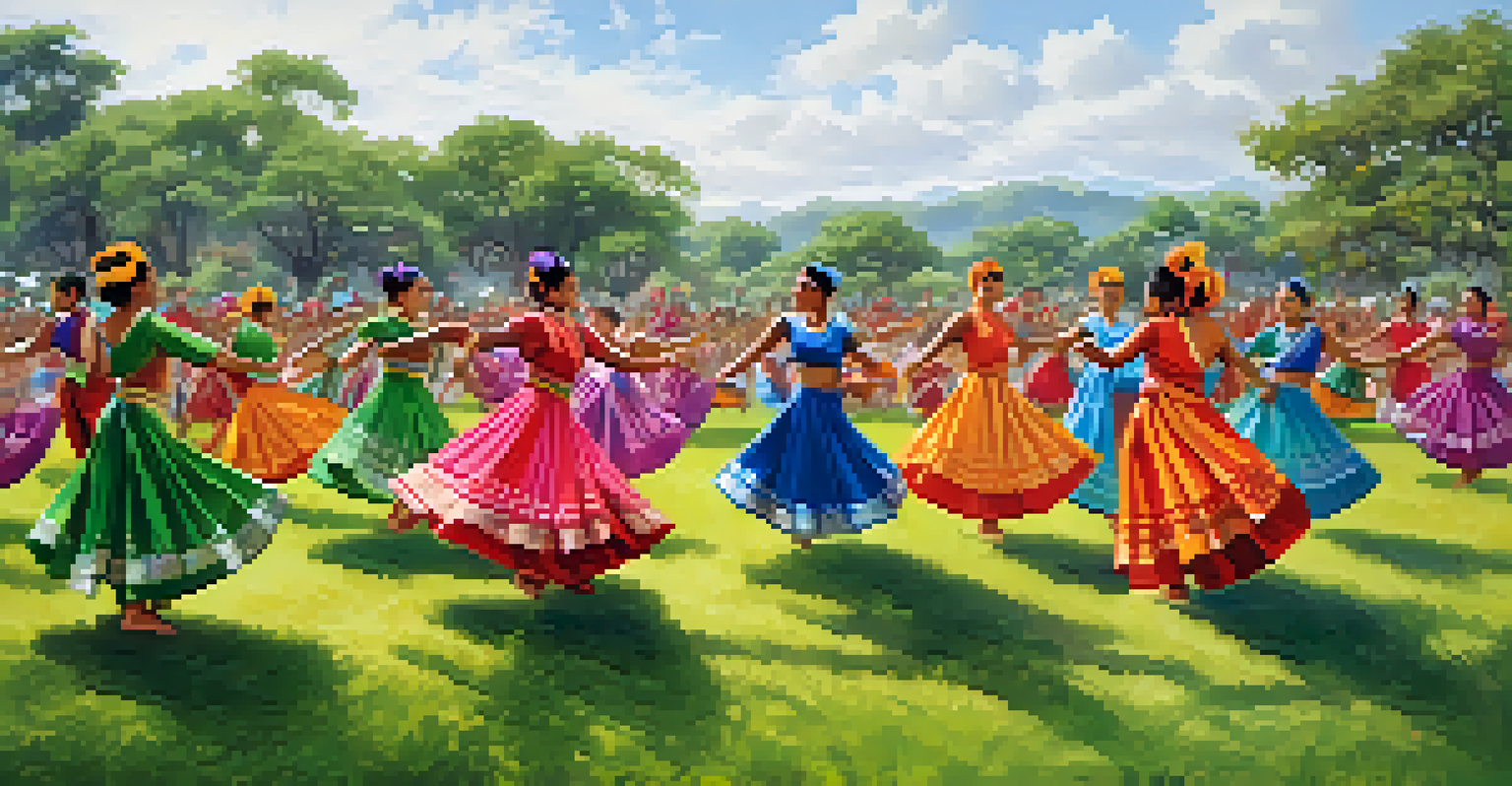Emotional Expression through Dance: The Power of Music

Understanding the Link Between Dance and Emotion
Dance has long been recognized as a powerful medium for emotional expression. When we move to music, our bodies reflect the feelings we experience, whether it's joy, sadness, or anger. This connection allows us to communicate emotions that words sometimes fail to convey, creating a universal language.
Dance is the hidden language of the soul.
For example, consider a ballet performance: the graceful movements can evoke feelings of serenity and beauty, while a hip-hop dance may express energy and rebellion. Each style of dance taps into different emotions, showcasing the versatility of movement as an expressive tool.
Ultimately, understanding this link enhances our appreciation of both dance and music, as we recognize how they work together to convey the emotions that lie deep within us.
The Role of Music in Shaping Dance Movements
Music serves as the heartbeat of dance, providing rhythm and inspiration. Each note and beat influences how dancers interpret and express their emotions through movement. For instance, a fast-paced song may lead to energetic and sharp movements, while a slow melody encourages fluid, gentle motions.

Moreover, the genre of music can significantly impact the style of dance performed. A classical piece might inspire ballet, while a pop hit could lead to contemporary or street dance. This intersection of music and dance allows for an authentic emotional release.
Dance as Emotional Expression
Dance serves as a universal language, allowing individuals to express complex emotions that words often cannot capture.
By recognizing this relationship, dancers can harness the power of music to enhance their performances, allowing their emotions to shine through each movement they make.
Dance as a Form of Emotional Release
For many, dance serves as a therapeutic outlet, providing a safe space to process emotions. Moving to music can release pent-up feelings, whether it's stress, grief, or happiness. This physical expression allows individuals to connect with their emotions on a deeper level.
Music is the shorthand of emotion.
Consider a dancer who has experienced loss; through movement, they can express their sorrow and work through it, often finding a sense of relief. The act of dancing can be cathartic, helping to transform negative emotions into something beautiful and meaningful.
This emotional release not only benefits the dancer but can also resonate with the audience, creating a shared experience that fosters connection and understanding.
Cultural Expressions Through Dance and Music
Different cultures utilize dance and music to express their unique emotional landscapes. Traditional dances often tell stories or represent significant life events, allowing communities to connect with their heritage and history. For example, the African dance forms celebrate life, community, and ancestral ties.
Through these cultural expressions, emotions are conveyed in ways that transcend language barriers. People from different backgrounds can connect through the universal feelings represented in these dances, promoting empathy and understanding.
Music Shapes Dance Movements
The rhythm and style of music significantly influence how dancers interpret emotions through their movements.
As we explore various cultural dances, we gain insight into the emotions that shape different communities, reminding us of our shared humanity despite our differences.
The Science Behind Dance and Emotional Expression
Research in psychology and neuroscience reveals fascinating insights into how dance affects our emotions. Studies show that engaging in physical activity, like dance, releases endorphins—our body's natural mood lifters. This biochemical response can enhance feelings of happiness and reduce anxiety.
Additionally, dancing has been linked to improved cognitive function and emotional regulation. The act of learning choreography requires focus and can distract from negative thoughts, providing a mental break that leads to emotional clarity.
By understanding the science behind dance, we can appreciate its profound impact on our emotional well-being and its potential as a tool for mental health.
Creating Emotional Connections Through Dance Performances
Live dance performances have a unique ability to evoke emotions in both the dancers and the audience. The energy in the room can be palpable, with the audience feeling the emotions being expressed on stage. This connection can lead to a shared experience that resonates long after the performance ends.
For example, a powerful contemporary dance piece may leave viewers feeling uplifted or moved to tears, as they relate to the themes and emotions portrayed. The dancers' vulnerability and authenticity invite the audience to reflect on their own feelings and experiences.
Cultural Connections in Dance
Different cultures use dance to convey unique emotional narratives, fostering empathy and understanding across diverse communities.
This emotional exchange highlights the power of dance as a medium for storytelling, bridging the gap between performers and spectators through shared human experiences.
The Future of Dance and Emotional Expression
As we look ahead, the integration of technology in dance is opening new avenues for emotional expression. Virtual reality and digital platforms allow dancers to reach wider audiences, sharing their stories and emotions in innovative ways. This evolution can enhance the emotional experience for both performers and viewers.
Furthermore, social media has given rise to a new generation of dancers who express their emotions through short videos, often going viral. This phenomenon promotes a sense of community and connection, as people share their feelings and experiences through dance.

As the world of dance continues to evolve, the fundamental connection between music, movement, and emotion remains a powerful force that will inspire future generations.